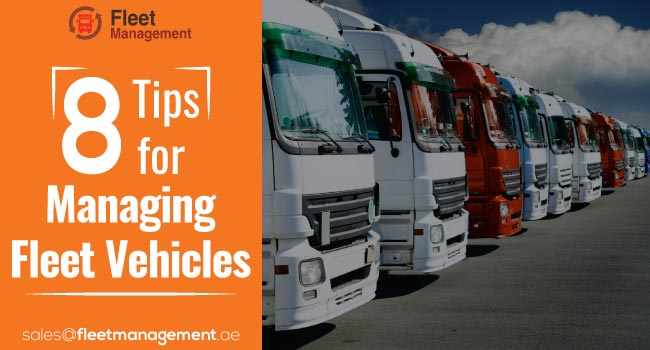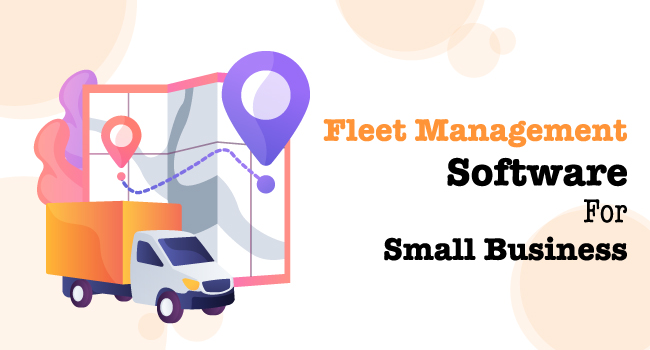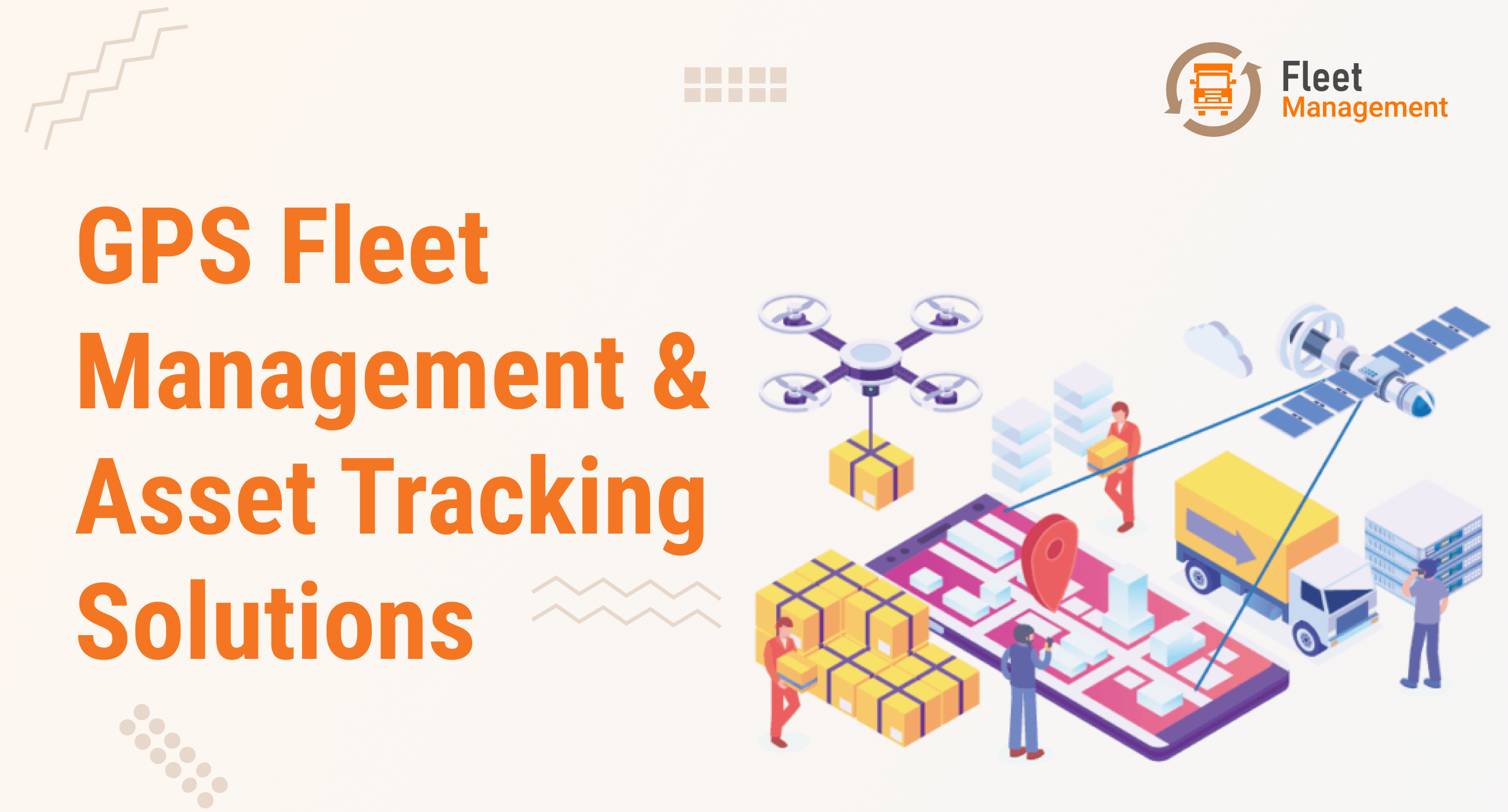Our Blogs
 Fleet Management()
Fleet Management() Car Rental Software()
Car Rental Software() Fleet Drivers()
Fleet Drivers() Infographics(0)
Infographics(0) News(0)
News(0)
Service We Offer
Follow Us
8 Tips for Managing Fleet Vehicles

Whether in business organizations like a trucking company or in educational institutions or school districts, fleet managers have to supervise even complex fleet operations daily.
Managing a fleet of vehicle includes supervising, organizing, as well as recording all aspects of a company’s fleet.
Being a manager, you may have to set up regular vehicle maintenance schedules, look for cost saving trials, or even execute effective driver training plans.
The complexities in managing fleet operations force many companies to outsource their fleet management tasks to firms that provide services of experienced fleet managers.
Read Also: Top 5 Tips to Increase Efficiency of Your Fleet
Exceptional fleet management can provide diverse benefits such as better productivity, reduced fuel usage, increased business efficiency and even happy customers by supplying goods and services on time.
Here are 8 tips to make you an effective fleet manager
1. Key step – have a complete fleet management program
A well-executed fleet vehicle management plan can serve as a major contributor to any business’ bottom line.
Such a well planned program includes tracking, evaluating and optimizing every element of the fleet such as buying vehicles, monitoring the fleet, managing costs, appointing and training drivers, modifying safety set of rules, setting up Key Performance Indicators (KPIs), preparing the team for all operation situations and justifying associated risks.
2. Keep proper records of all data
Maintaining records are crucial for vehicle management. The manager is responsible to know all details such as what vehicle will be handled by which driver, during which time.
Make sure to have a log which will be signed by the drivers daily and this log should include details such as name of the driver, date, number of vehicles they drive and the time they started and returned.
Managers should also maintain physical and digital records of –
- condition of the vehicle, which helps to know all the mechanical problems
- the mileage before and after the shift and perform regular maintenance accordingly
- tire conditions and pressure
- detailed maintenance history such as date of last oil change for all vehicles in the fleet
- common routes that the vehicles are taken through and
- alternate routes that can avoid heavy traffic patterns
With digital records, it is easy to find any report much faster than searching among a pile of papers.
3. Use advanced fleet management software
With a fleet management system, managers can track and maintain their fleet in a quick and accessible way.
Desktop as well as mobile based fleet management applications are now available to manage all types of transportation.
Such software helps to take complete control over almost every aspect of the fleet’s operations. Along with adhering to regulatory requirements, such apps can reduce the operational costs, improve fleet visibility and fuel management and increase profitability as well as driver satisfaction.
Companies are providing automation platforms for transportation that helps to convert your current fleet operating procedure to much easier ones that can boost engagement and create a better secure experience for all stake holders.
With this type of software, managers can also benefit from features such as real-time alerts, route optimization plans, planning for deliveries on-time and more. Choose the one that can integrate into your systems flawlessly.
Auto fleet management also helps to allocate the task to agents one by one based on the nearest location or it will be assigned on the first come first serve basis. There are also options to serve batch wise.
4. Hire qualified drivers
While hiring fleet employees, you should consider several factors. Accredited medical cards should be obtained to certify that the applicant is medically fit for driving commercial vehicles.
The driver must have –
- a valid driving license with appropriate class requirements
- the physical as well as mental potential to operate vehicles in a safe manner
- Department of Transportation’s (DOT) medical card
- a commercial driving license (CDL) to operate truck vehicles
- experience in the field and a history of steady employment
- passed a certified pre-employment drug and alcohol screening
- a better driving record
Experience required for a driver may differ for different businesses. If they are not that experienced, consider the period of time in which they had their license.
Read Also: What Are The Benefits of Fleet Management Software?
Also ask for references from previous employers, which help to learn about the candidate’s skill level, behavior on the job and capability in the field.
5. Offer additional training for drivers
Even if the drivers joining your team has sufficient experience and training, providing additional training with instructions to drive on different types of roads, hazards of unfocused and weak driving and first aid training will help.
You should also arrange superior screening policies for all drivers and train them with safe-driving policies to lower traffic incident risks of fleet vehicles.
With successful safety training programs, organizations can decrease accident rates, reduce vehicle repair costs and lessen legal issues.
Make sure to provide your drivers with guidelines regarding the importance of wearing seat belts, and advise them on what need to be done in case of a vehicle breakdown, road incident or crash.
Also implement fleet-wide safety rules and make it mandatory for every staff to follow them. Make them aware of the consequences that may occur due to distracted driving and use of mobile devices during driving.
Also make them sign this document of safety rules to ensure their understanding of these policies.
Regular training programs also help drivers to be up to date with the transportation industry trends and any change in company rules or standards.
Less experienced staff must also be provided with on-road and off-road real-time training with the support of experienced staff.
6. Take care of vehicles too
While training and caring for your staff, remember your fleet vehicle also needs care. Consider having vehicle-specific safety policies in place to protect vehicles from any damage or accidents.
Developing wide maintenance and assessment schedules for each fleet vehicle help businesses to manage risks related to fleet operations, guarantee safety, and reduce spending on repairs can help.
Also remember to regularly update and document these guidelines. Maintenance program for your fleet can be preventive, routine or even emergency one.
While preventive maintenance focuses on maintaining the overall condition of the vehicle, routine maintenance occurs on a regular basis for every type of vehicle.
At the same time, emergency maintenance is unplanned. With an excellent preventive and routine maintenance policy, your firm can avoid any major emergency maintenance problems that may occur.
7. Use GPS software to track your fleet
Sophisticated fleet tracking systems which use global positioning systems (GPS) are now widely available to track the exact location of any vehicle. Installing GPS tracker for trucks and other vehicles helps with the better management of fleets in a much lower operating cost.
By tracking your trucks and drivers real time, drivers need not have to call you to update the location or tasks done. You can also correct them in case of they are passing through a wrong route. Managers can check the driving patterns and if vehicle is missing or someone has stolen it, location can be noticed.
8. Have an idea about fleet insurance policies
With the right fleet insurance policy, all vehicles can be covered. Make sure to find the right coverage at the most affordable price for your specific fleet.
Discussing with experienced hands in the industry helps to understand your insurance needs and the insurance providers in the industry space.
There will be changes and updates to most insurance policies each year. Consider an annual review to assess whether your current policy is meeting the company’s changing insurance needs.
These reviews can also help managers to evaluate claims and recognize ideal steps to minimize insurance costs in the future.
You must have a clear idea about the changes that may occur in your insurance policy if you add more vehicles or drivers to your fleet.
Read Also: 7 Essential Skills To Become A Successful Fleet Manager
Also check whether your insurer offer any discounts, if you implement fleet management software, or provide better security measures or arrange any focused training programs.
With this knowledge, you can consider adding these features to your fleet and thus take benefit from the discounts offered.
Let us know if these tips help you manage your fleets better.








